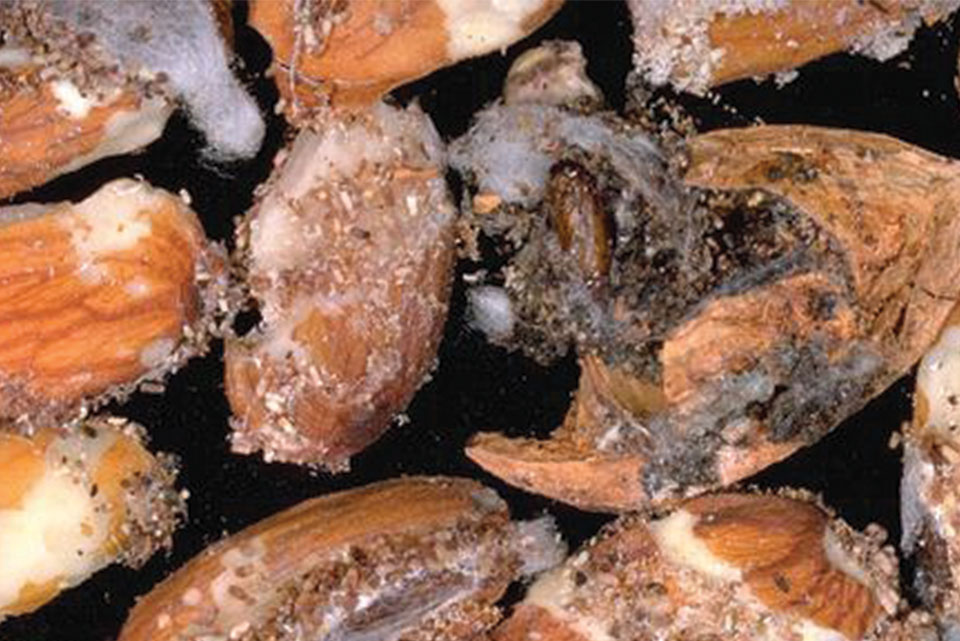
Navel Orangeworm
About
Navel Orangeworm, Amyelois transitella, is a monotypic snout moth located in southern North America's tropical regions. It is the larvae that are pests to nut and citrus growers in southern California.
Biology and Life Cycle
Navel Orangeworm moths lay their eggs on overripe, cracked, or mummified fruits and nuts. As the eggs mature, they turn a red-orange color.
The larvae then burrow into the tree's fruits until they mature into adult moths. Newly enclosed larvae start out as an orange color but change to more of a pinkish-orange color before they pupate.
Adults are gray and only 1/2 to 1 inch in size. When mated, an adult female moth can lay up to 300 eggs at a time.
Preferred Host
These moths prefer almonds, pistachios, and walnuts to lay their eggs on. They will also graze on oranges and other citrus fruit.
What to Watch For
Keep an eye out for tiny, oval, orange-colored eggs with ridges on them, either on the fruits of the tree or twigs. The eggs will be about 0.5 to 1 mm in diameter at most. Look out for any surface-scarred nuts or borer damage on the fruits. The larvae will also produce a large amount of webbing and frass when eating.
During the fall and winter, it is recommended to remove any nuts and fruit that are mummified or on the ground, as the moths like to lay their eggs there.
Economic Impacts
Navel Orangeworm can primarily be found in southern California, where it has cost growers approximately $6 billion in tree damages and low yields.

| Kingdom: | |
| Phylum: | |
| Class: | |
| Order: | |
| Family: | |
| Genus: | Amyelois |
| Species: | A. transitella |
| Binomial name | |
|---|---|
| Amyelois transitella (Walker, 1863) | |



